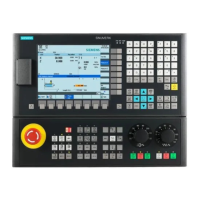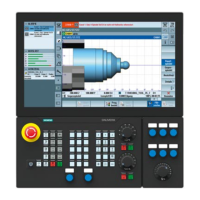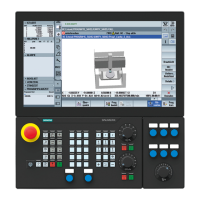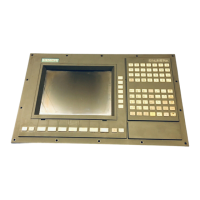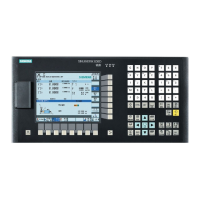Fundamental Principles of NC Programming
2.2 Language elements of the programming language
Fundamentals
Programming Manual, 10.2004 Edition, 6FC5 298-7AB00-0BP1
2-15
• All identifiers beginning with "E_ " are reserved for EASYSTEP programming.
Variable identifiers
In variables used by the system, the first letter is replaced by the "$" character. This
character may not be used for user-defined variables.
Examples (see "List of system variables"):
$P_IFRAME, $P_F
Leading zeroes are ignored in variables with numeric extensions (i.e., R01 is interpreted as
R1). Separators are allowed before a numeric extension.
Array identifiers
The rules for elementary variables also apply to array identifiers. It is possible to address
arithmetic variables as arrays.
Example:
R[10]=…
Data types
A variable can contain a numeric value (or several) or a character (or several), e.g., an
address letter.
The data type permitted for the variable is determined when the variable is defined. The data
type for system variables and predefined variables is fixed.
Elementary variable types/data types are:
Type Meaning Range of values
INT Integers with leading sign ±(231 - 1)
REAL Real numbers (fractions with decimal
point, LONG REAL to IEEE)
±(10-300 … 10+300)
BOOL Boolean values: TRUE (1) and
FALSE (0)
1, 0
CHAR ASCII character specified by the
code
0 … 255
STRING Character string, number of
characters in [...], maximum of 200
characters
Sequence of values with 0 ... 255
AXIS Axis names (axis addresses) only Any axis identifiers in the channel
FRAME Geometrical parameters for
translation, rotation, scaling, and
mirroring
Identical elementary types can be combined in arrays. Up to two-dimensional arrays are
possible.

